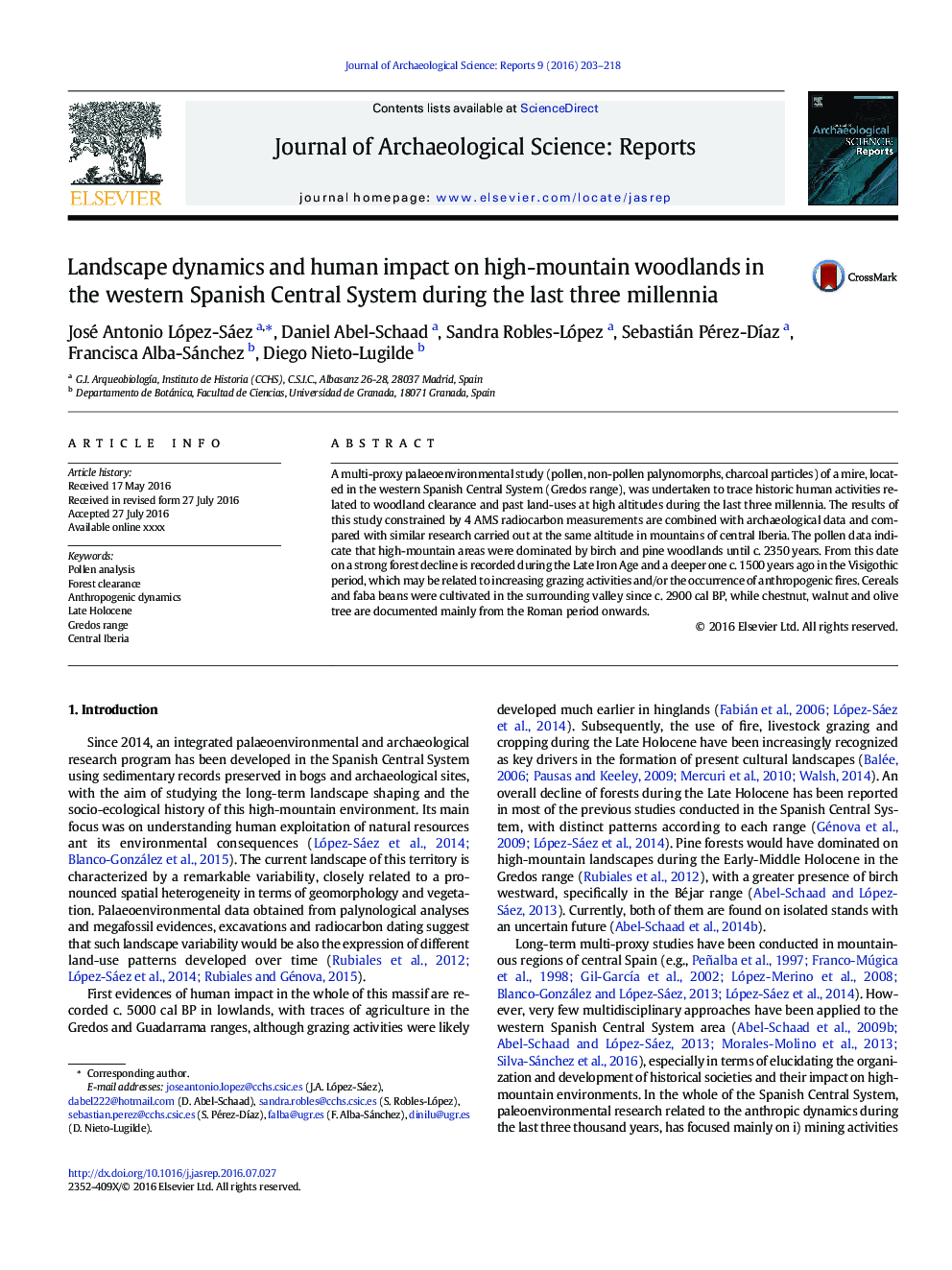| Article ID | Journal | Published Year | Pages | File Type |
|---|---|---|---|---|
| 7445379 | Journal of Archaeological Science: Reports | 2016 | 16 Pages |
Abstract
A multi-proxy palaeoenvironmental study (pollen, non-pollen palynomorphs, charcoal particles) of a mire, located in the western Spanish Central System (Gredos range), was undertaken to trace historic human activities related to woodland clearance and past land-uses at high altitudes during the last three millennia. The results of this study constrained by 4 AMS radiocarbon measurements are combined with archaeological data and compared with similar research carried out at the same altitude in mountains of central Iberia. The pollen data indicate that high-mountain areas were dominated by birch and pine woodlands until c. 2350Â years. From this date on a strong forest decline is recorded during the Late Iron Age and a deeper one c. 1500Â years ago in the Visigothic period, which may be related to increasing grazing activities and/or the occurrence of anthropogenic fires. Cereals and faba beans were cultivated in the surrounding valley since c. 2900Â cal BP, while chestnut, walnut and olive tree are documented mainly from the Roman period onwards.
Related Topics
Social Sciences and Humanities
Arts and Humanities
History
Authors
José Antonio López-Sáez, Daniel Abel-Schaad, Sandra Robles-López, Sebastián Pérez-DÃaz, Francisca Alba-Sánchez, Diego Nieto-Lugilde,
